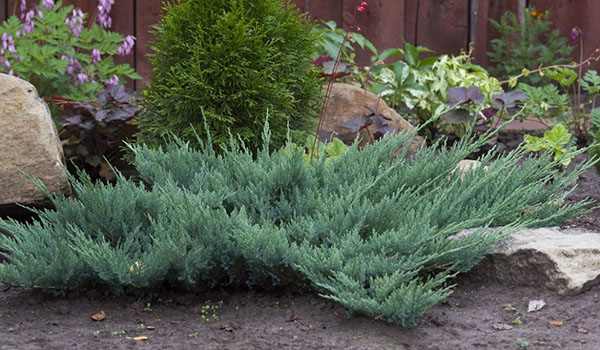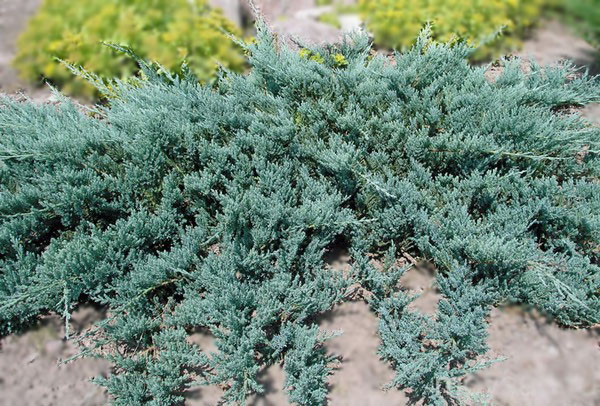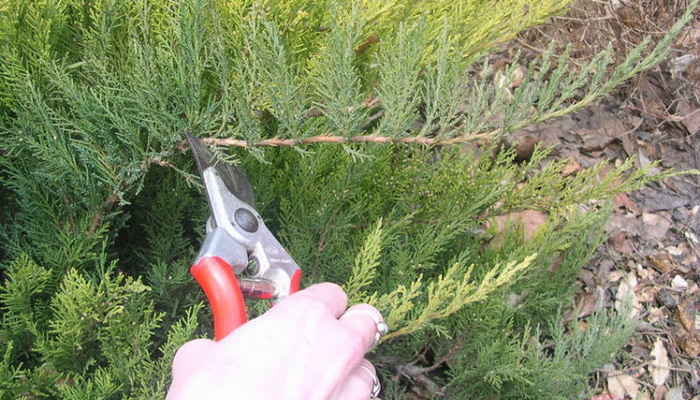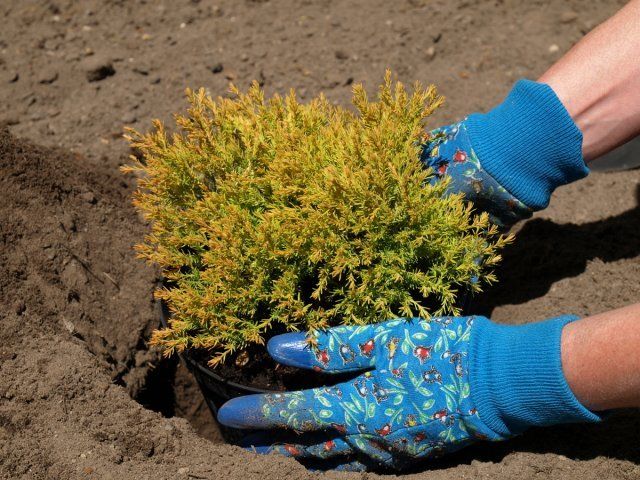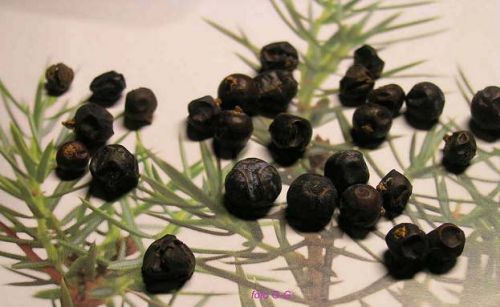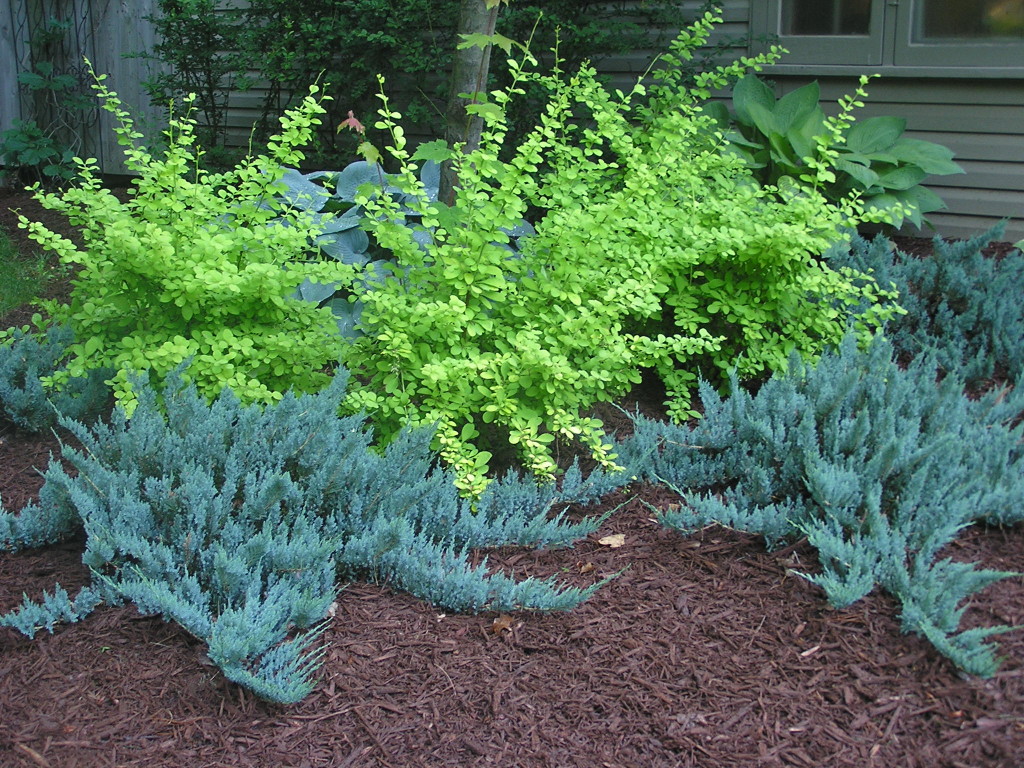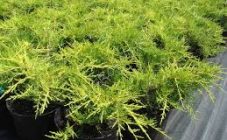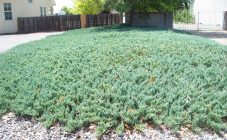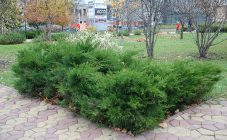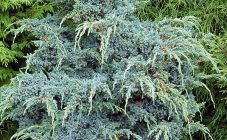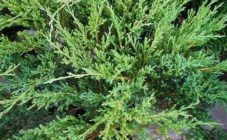Content:
The Blue Chip Juniper is a low growing coniferous shrub. It grows, unlike many other bushes, not in height, but parallel to the soil (in width), covering it (hence its informal definition - ground cover).
The Blue Chip juniper variety is the most popular among amateur gardeners.
Origin of the Blue Chip
The variety was bred by Canadian-American breeders. The name was given in honor of the financial company of the same name, which is respected and trusted by many American citizens. Thanks to this, the phrase "Blue Chip" acquired a different meaning than the standard one: "blue chip". For American citizens, the combination of these words has meant "top quality" for many years.
Description and characteristics of the variety
Juniper Blue Chip is a stunted plant of extraordinary beauty. Due to its appearance, it took first place among all ornamental plants in the world in 2004. The competition was held in Poland, where at that time practically all connoisseurs of coniferous representatives of the flora gathered.
The height of the shrub reaches a maximum of 40 cm, while the width can be up to one and a half meters. It is an evergreen coniferous plant.
The main value of this species lies in its luxurious green and blue branches with a gray bloom. They are very beautiful - thick and fluffy, spreading like a gorgeous blanket above the ground. In autumn, the juniper shrub turns into an exquisite lilac-burgundy color.
Landing - basic rules
In order for the plant to take root well on the site, it is necessary to plant it immediately upon coming home from the store. To do everything right, you should get advice from the seller, as well as read the advice of experienced growers. It is necessary in advance to find a place for the bush on the site. It is important that it is of sufficient area and, preferably, provided with maximum sunlight and heat. The bush should not be in a shaded area.
At the chosen place, you need to dig a hole and fill it with water. But first, you should carefully shed the roots of the plant in the container.
You can also enrich the soil with various mineral fertilizers specifically designed for conifers. In the presence of heavy clay soil, a drainage layer (20 cm) of small river stones and gravel should first be made to better absorb moisture and provide the roots with air.
If the soil is rich in all the necessary minerals for the growth of juniper, then its decorative appearance will be increased to the maximum.
Plant cultivation
Planting and caring for Blue Chip juniper is not much different from the same manipulations with other conifers.
Planting a plant in the ground is carried out according to the scheme 1 * 1.5 meters. There should not be less distance between the bushes.
After planting, it is necessary to abundantly treat the bush with various chemicals for roots and branches (their names can be clarified in specialized stores).
Before processing with drugs, you should study the instructions well and shed the roots of the juniper with plain water, in a volume of no more than 18 liters per bush.
Although the winter hardiness of the shrub is high, it is worth worrying about a young plant. Before sending it "for wintering", the root system should be insulated - sprinkle the soil abundantly with dry sawdust or cover with burlap.
If this is not done, then the juniper may dry out, due to the fact that moisture evaporation occurs all year round, and the spring soil has not yet thawed. The roots simply do not yet have the ability to get moisture from it.
For a quick resumption of the root system of the bush, it is recommended to thaw the soil on your own (you can do this with a blowtorch, but gradually, most importantly, do not overdo it and damage the bush itself).
If you do all these actions in a timely manner, then watering the bush can already be resumed in mid-March. With the appearance of the warm spring sun, you should remove the “veil” that covered the plant.
Care features
In order for the juniper shrub to be beautiful and healthy, it is necessary to select the right place and soil for its location.
The place should be open, it is desirable that the sun's rays can hit the plant from sunrise to sunset. If it is impossible to comply with this plant need, it is allowed to select an area with a little shading.
Juniper Blue Chip has a positive attitude towards water, although too much of it and careful daily watering can ruin the plant. It is enough to water the shrub 1-2 times a week; in dry summers, irrigation should be increased up to four times.
Sandy, slightly acidic and nutritious (at the same time) soil will be ideal for the growth of juniper.
Otherwise, caring for this type of juniper is quite simple. This plant is completely unpretentious, and it tolerates frosts courageously.
Features of culture cultivation
There are three ways to breed conifers:
- grafting;
- taking stepsons;
- seed method.
Since the Blue Chip juniper is a ground cover variety, the option with cuttings disappears. At the same time, the seed method is very long and does not always lead to the desired result.
The only real way to breed Blue Chip juniper is to grow it from cuttings.
How to do it? In general, not everything is as difficult as it seems, the main thing is patience.
The step-by-step instructions for breeding Blue Chip juniper looks like this:
- For the cultivation of cuttings, a suitable shrub with a large amount of good material for further cultivation is chosen. Young and healthy shoots are needed.
- Then the soil is prepared. If it is clayey, then it is loosened, drainage is laid, in other cases, it is simply carefully fertilized. The soil should be the same as the first planting in the ground, the plant bought in the store.
- Then they choose a healthy shoot, tilt it, sprinkle it with earth. Lightly tamp and attach the bush with a "hairpin" (preferably metal) to the soil.
- The pinned area is regularly watered and loosened for better and faster rooting.
- After the allotted shoot takes root and can exist independently (this takes up to one year), it must be transplanted away from the "donor".
Thus, having at least one specimen of Blue Chip juniper on his site, a fan of ornamental plants can easily organize reproduction and, perhaps, even make money on it.
Diseases
Conifers are very resistant to any disease. Although there are diseases that can harm the garden handsome:
- If the bush, with sufficient watering and careful care, suddenly began to turn yellow and dry, then most likely this is a disease called rust. If such symptoms are found on one of the bushes, it is necessary to take care of the safety of the rest, and to place the "patient" in an individual place until complete recovery. The treatment of the bush must be carried out by fertilizing the soil at the root system and by spraying the branches with special preparations.
- Insects feeding on needles (scale insects, aphids, etc.) are no less dangerous for junipers. As in the case of rust, it is necessary to spray the shrubs with insect repellents (insecticides) designed specifically for conifers.
- If, in addition to drying branches, a white bloom has appeared on the bush, this is a sign that the plant has overcome a putrefactive fungus. In this case, the plant will not be cured, it will die. It is necessary to uproot the shrub from the ground as soon as possible and completely burn it. It is advisable to disinfect the earth at this place.
In case of any unknown diseases, in order to protect the rest of the shrubs, it is advisable to immediately get rid of the infected plant and disinfect the soil.
You should remember well the main diseases of juniper and their symptoms in order to quickly detect them, and then competently start treating the shrub, or get rid of a hopelessly sick plant.
Blue Chip is a great choice for landscaping
This type of juniper is often used to decorate landscapes.
This luxurious and graceful shrub can beautify any garden plot. With its help, they often create unique mixboards and rock gardens. And also Blue Chip can become an exquisite decoration of a flower bed.
In addition to external beauty, this juniper variety is an excellent fighter against germs and bacteria. This is another great reason to buy this plant.
Juniper Blue Chip is a completely unpretentious, beautiful and noble shrub. It has many interesting properties that have a positive effect on human health and the environment. A wonderful color scheme allows you to decorate any landscape interior with this juniper. An exquisite, beautiful, antimicrobial plant is not a reason to ennoble your garden plot with it.
